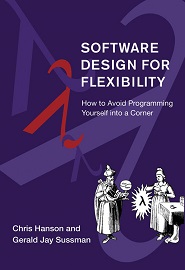
English | 2021 | ISBN: 978-0262045490 | 448 Pages | EPUB | 10 MB
Strategies for building large systems that can be easily adapted for new situations with only minor programming modifications.
Time pressures encourage programmers to write code that works well for a narrow purpose, with no room to grow. But the best systems are evolvable; they can be adapted for new situations by adding code, rather than changing the existing code. The authors describe techniques they have found effective–over their combined 100-plus years of programming experience–that will help programmers avoid programming themselves into corners.
The authors explore ways to enhance flexibility by:
- Organizing systems using combinators to compose mix-and-match parts, ranging from small functions to whole arithmetics, with standardized interfaces
- Augmenting data with independent annotation layers, such as units of measurement or provenance
- Combining independent pieces of partial information using unification or propagation
- Separating control structure from problem domain with domain models, rule systems and pattern matching, propagation, and dependency-directed backtracking
- Extending the programming language, using dynamically extensible evaluators
Download from free file storage
Resolve the captcha to access the links!